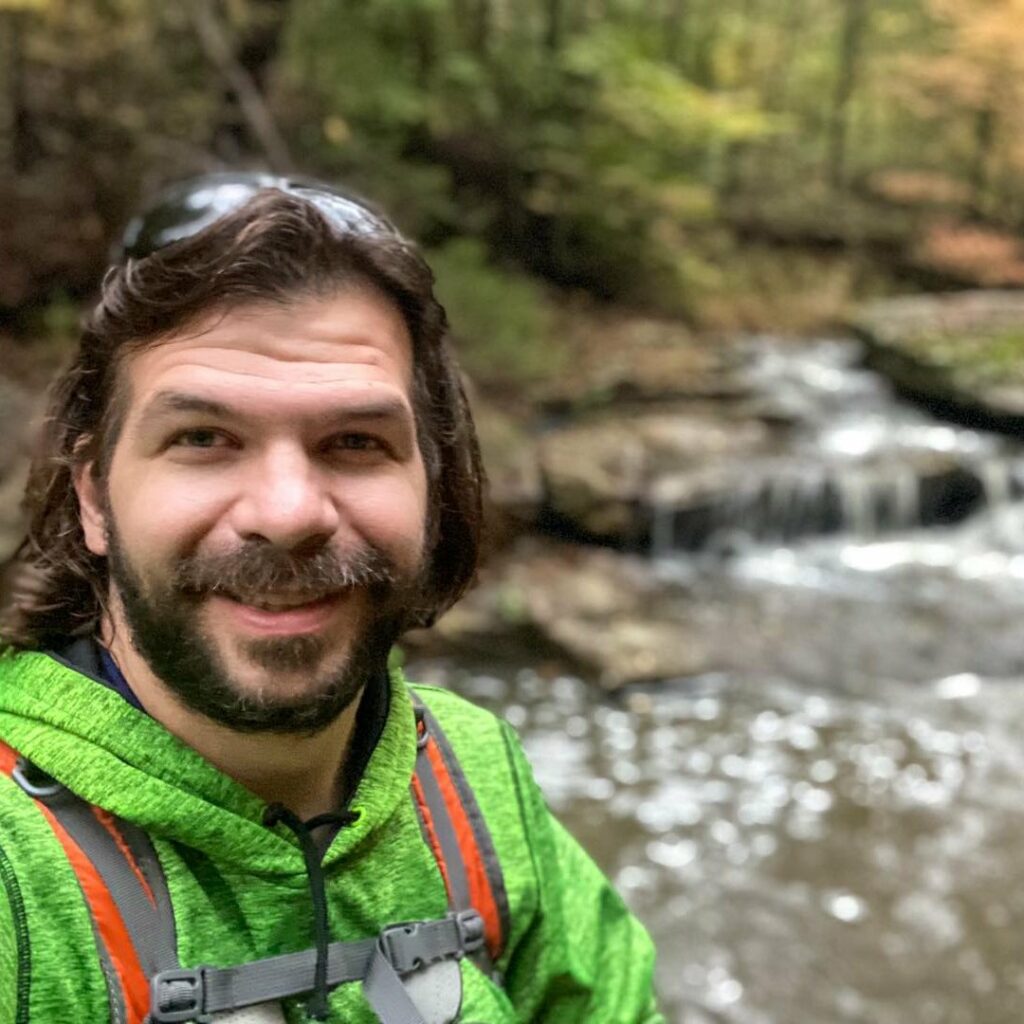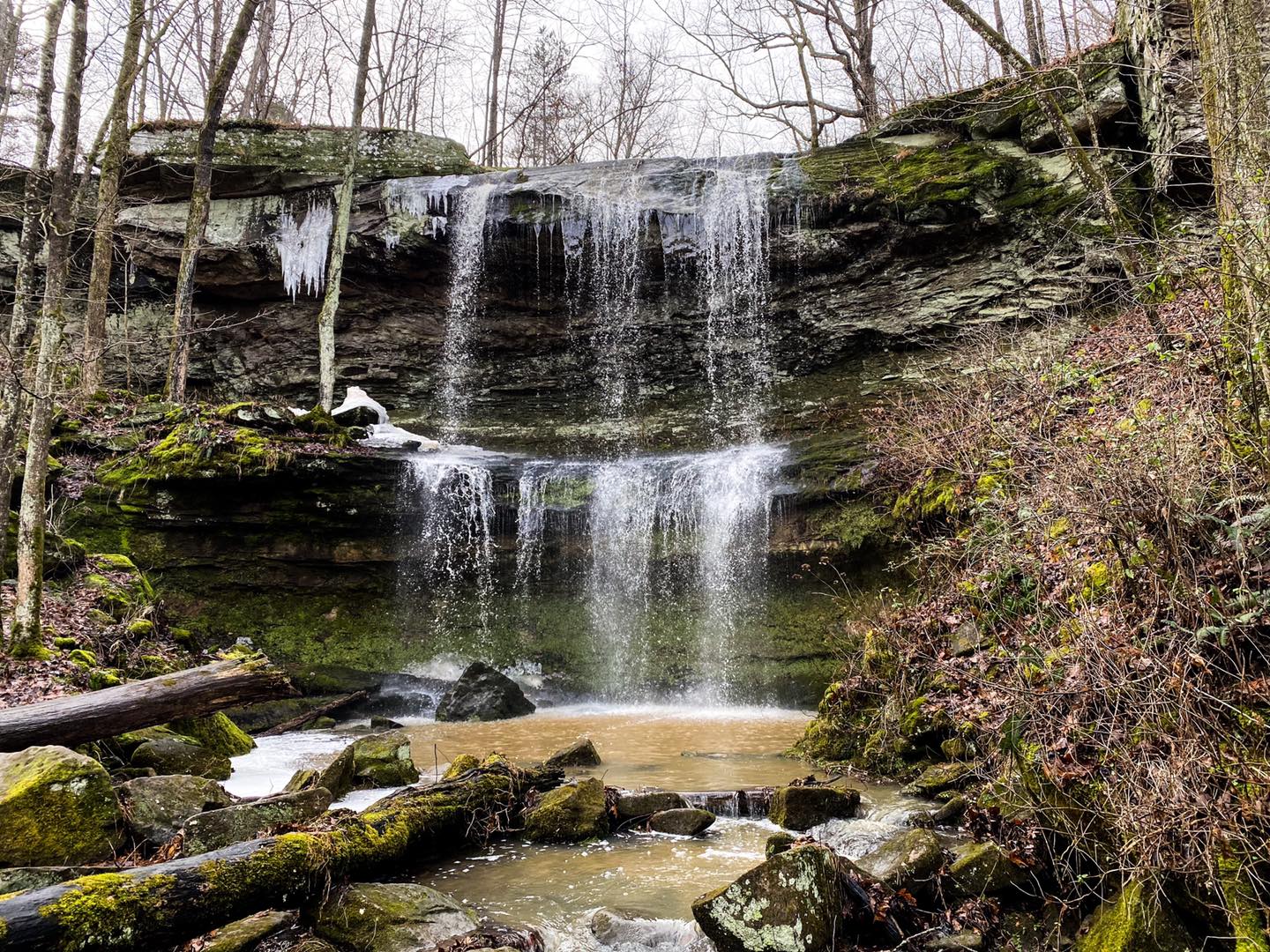Waterfall Safety Tips for Hikers and Backpackers
Instead of just throwing out a couple of waterfall safety tips, I wanted to create this guide for you to consume.
Where I come from, the Shawnee National Forest, we’ve had our fair share of severe injuries and even fatalities from those who fall around waterfalls.
Could you imagine going out to see something magical only to get injured badly enough, never to walk again, or to lose a friend or loved one because they fell to their death? It’s a horrible thing to think about, especially that last part.
You can and should go waterfall chasing. It’s one of the best things about hiking and backpacking. They’re amazing to see in person. They make for great photos and videos. And many of them are often very rare and require a lot of recent rain.
But at least follow these waterfall safety tips to avoid getting hurt and not getting killed in the process.
And don’t just stop reading this guide; share it with others, and help set an example of how to enjoy waterfalls and nature safely.
Waterfall Safety Tips: The hazards are 100 times more present.
Before we get into these important waterfall safety tips, we need to realize just how much danger is introduced when chasing waterfalls.
Hiking and backpacking have plenty of hazards and risks associated with their activities, but it becomes a different situation once you introduce large amounts of fast-moving water. The hazards and risks significantly increase, and more attention must be dedicated by you when you’re conducting these types of recreational activities.
The last thing you don’t want to do is leave a waterfall on a backboard or a body bag. You want to leave two feet alone, happy and excited about telling others about your waterfall-chasing experience. But too many people leave with severe injuries or a loss of life and then become statistics for articles like this.
So many injuries occur each year associated with waterfalls. It’s not just falling off a waterfall, either. You can drown, get hypothermia, fracture your bones, and retain major lacerations. Many minor avoidable injuries can also occur. The ultimate injury is death which impacts your loved ones and can ruin lives.
Don’t become a statistic.
Hiking and backpacking are risky enough. Add a waterfall to the mix, and the risk significantly increases. Add a frozen waterfall, and the risk increases even higher than it was when running waterfalls.
Take waterfalls and their risks very seriously, and that’s how you survive without terrible memories to share.
Waterfall Safety Tips: Preparing for Waterfall Chasing
The best way to avoid hazardous accounts around waterfalls is to plan and prepare before going waterfall chasing. There are a few easy-to-do, routine activities to prepare for waterfall adventures. Turn these activities into habits, and your personal safety culture significantly increases.
Research Before You Go
Before you go chasing waterfalls, do some research. Don’t just research waterfall safety tips; research everything you can about your hiking location. Check the weather forecast and note any chances of thunderstorms or heavy rain. Flash flooding can occur quickly and turn a fun situation into an active deadly situation. It doesn’t take much water to sweep you off your feet. Understand your hiking route by researching it. Download and print out maps. Understand the topography of the area. How long is the hike? Is it a loop or out-and-back? How much elevation? How difficult is the hike? Many web and mobile apps (like All Trails) will help you answer these questions.
Clothing and Footwear
Wear the right clothing and footwear for the right waterfall-chasing season. If you plan to get wet, wear clothing and footwear made for getting wet. Bring something to waterproof yourself with and a change of clothes if needed. I carry a “layers kit” with me, which I’ll explore later in the article. Layer up if it’s cold, and make sure you have a water-repellent layer on you, too. Your footwear should be sturdy for outdoor use, and the grip on the bottom should be great for the condition you’re hiking in. Typically, hiking-specific clothing and boots will be the best for waterfall safety.
Bring the Right Gear
Get a hiking-specific backpack. It doesn’t have too big. My day packs are usually around 36 liters. Put the right gear in your day pack.
- It should include a couple of flashlights (with extra batteries)
- a first aid kit
- a poncho (great as an emergency shelter)
- lighter and waterproof matches
- paper maps
- a compass
- a water filter
- extra food and water
- phone cord and charging brick
- sunscreen
- bug spray
- personal locator beacon
- knife
- layers kit
- expandable trekking pole(s)
- A pair of water shoes or crocs (for water crossing)
A layers kit is extra layers you’d need if your clothing becomes too wet or unwearable. If it’s winter and you fall into a creek and get everything wet, you could face a significant risk of cold weather-related injuries if you’re out in a remote area. I pack a layers kit in my pack for this reason.
- It includes a lightweight synthetic towel
- A pair of wool socks
- A pair of insulated running tights
- An insulated running long-sleeve compression shirt
I carry insulated running apparel because it’s extremely lightweight and designed to be worn alone by runners. So, it weighs less to impact my carry weight, and if that’s all I have to wear, I will be okay as I make my way back home. Functionality over fashion!
When it comes to your gear, you want to pack enough to survive a few days in an emergency. Bring food that has carbs in it because that’s a few, and it will give you energy.
Tell Someone, Bring Someone
Before chasing waterfalls, print out a map of the area you will be at. Draw a circle around the area where the hiking trail is. Give that map to a friend or loved one not going with you. Tell them when you plan to be back. If you’re not back then, that person can contact first responders and report you missing. They can give the information you gave them to the first responders, and they may find you much quicker than without it. It might be what saves your life. You should also bring someone with you. You shouldn’t ever hike alone. A hiking buddy or buddies can get help if someone goes down.
Water Safety Tips: How to Avoid Incidents
Most incidents involving waterfall safety hazards are from behaviors and actions that could have been prevented. In most cases, if you use common sense and put safety first, you’ll avoid any negative incident involving a waterfall. You’ll most likely have a great time with awesome memories to share with all your friends and family. And these actions and behaviors to avoid are simple.
- Don’t take unnecessary risks like jumping from a waterfall, getting too close to the edge, trying to take a shortcut down to the bottom of the fall, getting too close to streams and moving water, and ignoring rules, warning signs, and safety barriers.
- Take personal responsibility. Make sure you wear the right clothing and footwear. Make sure you bring the right gear. Stay on the designated trail at all times. Put safety before selfies. Don’t endanger yourself or others. Think about the first responders who will have to risk their lives to save yours.
- Give people plenty of space and respect for all consumers of nature. That includes your fellow hiker, wildlife, park/forest staff, and nature. Practice Leave No Trace at all times. Pack out what you pack in. Leave it better than you found it. Be situationally aware of your surroundings.
- Take care of yourself and respect your safety and needs. Don’t do something more difficult than you can handle. Don’t try to out-hike your physical and mental abilities. Stay hydrated and fueled while chasing waterfalls. Protect yourself and your gear. Know your limits and make the right decisions.
Additional Waterfall Safety Tips to Consider
Here are some additional waterfall safety tips to consider before you chase waterfalls and during your hike, too.
- Don’t use drugs or alcohol. It can impair your ability to remain safe.
- Don’t climb on rocks or nature to get a better shot. It could lead to your demise.
- Everything will be slippery. Even things that look dry are often slippery.
- Don’t lean on anything if falling can be deadly. Trees break. Rocks move. Signs snap.
- Don’t play in the water above the waterfall. This is the area most people fall from.
- Swimming and wading are typically fine. Just do it in areas away from the waterfall hazards.
- Consider how remote an area is and how hard it would be for first responders to get to.
- Most waterfall areas don’t have mobile reception. That means you might not be able to call 911.
- Consider your balance. You might need to use trekking poles to help you move around.
- Watch your kids and pets. They’re typically not watching for their safety.
- Don’t cross rushing water. It doesn’t take much to sweep you off your feet.
- Use your better judgment. If it looks unsafe, it is likely unsafe.
Waterfall safety is easy to accomplish. It doesn’t matter if the waterfalls are running or frozen. If you start your hike with safety in mind, you can easily survive the adventure without any negative incidents. Leave the waterfall with good memories, not bad injuries. Please subscribe to my free monthly newsletter for more hiking safety tips.
Please Support Hiking with Shawn
Alrighty folks, I hope you have enjoyed this content. I provide it for free and it takes a while to create. If you would be so kind enough to support my efforts, you can do so by sharing this post with others, especially on social media. Be sure to subscribe to my YouTube Channel to see my latest videos, shorts and live streams. Follow me on Facebook, Instagram, Twitter and TikTok for unique content that you will only find on those pages. You might also join my Southern Illinois Hiking & Outdoor Resources Group on Facebook, too!
You can also support me by becoming a Patreon Supporter for as little as $3/month and you can cancel anytime (no contracts or catches). Patreons get access to extra features, exclusive articles, sticker packs, gifts and more. Consider buying official Hiking with Shawn Merchandise as another way to support me. I spend a lot of money on Hiking with Shawn and because of extremely high public land permit fees, I make very little money in return so everything helps.
Thanks again for checking out another one of my articles and until next time, I’ll see you on the trail!

Shawn Gossman
Founder, Hiking with Shawn
Howdy folks! My name is Shawn Gossman and I founded Hiking with Shawn. I’m an avid hiker, cyclist and outdoorsman here in the Shawnee National Forest. I was born and raised in Southern Illinois and never want to leave. Click here to learn more about Shawn Gossman



In the “water safety” tips section where it says: “Don’t do something more difficult than you can handle. Do try to out-hike your physical and mental abilities.” is it supposed to say “DO TRY to out-hike your physical and mental abilities” or “DON’T TRY TO”? I ask because that sentence coming right after saying “don’t do something more difficult than you can handle” is contradicting.
Thanks for the comment! I meant “Don’t” and have edited it. Appreciate the comment, Joe!